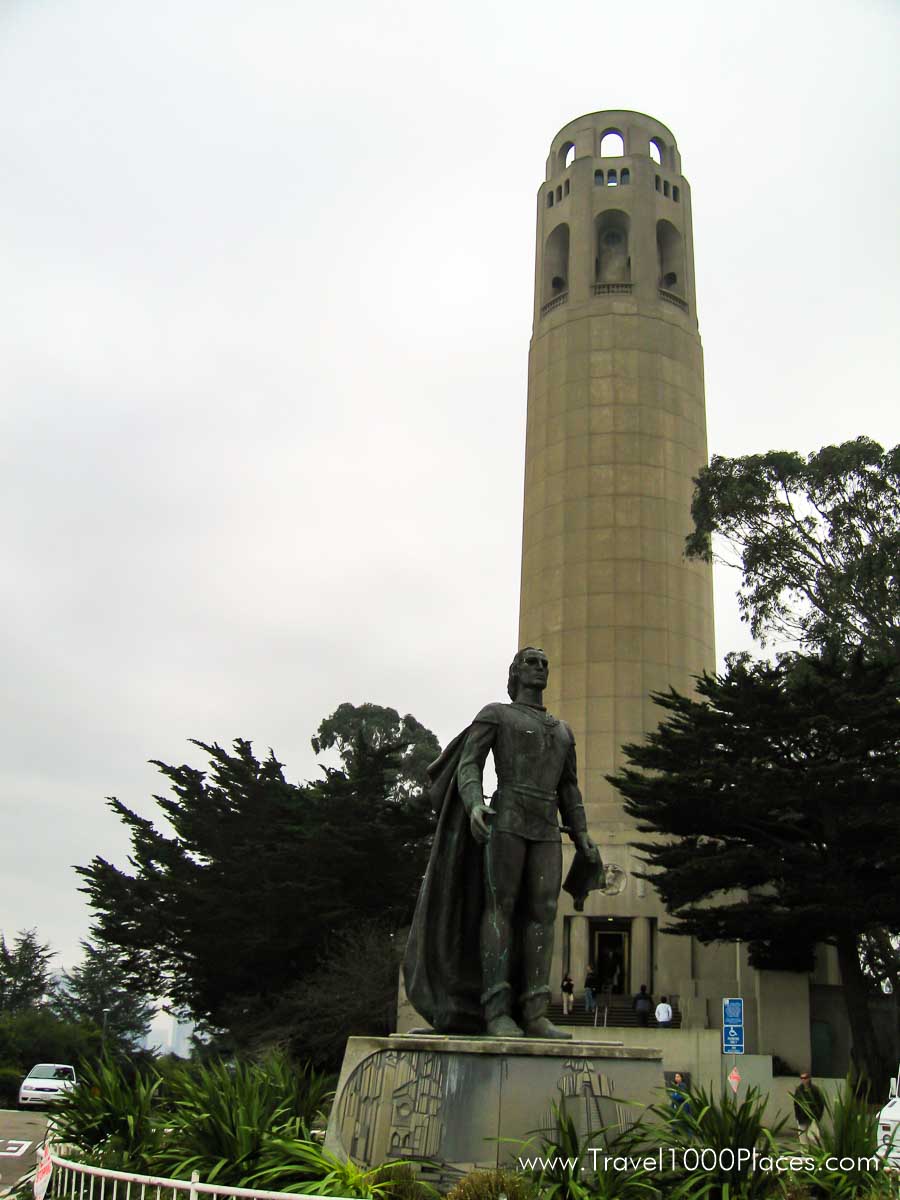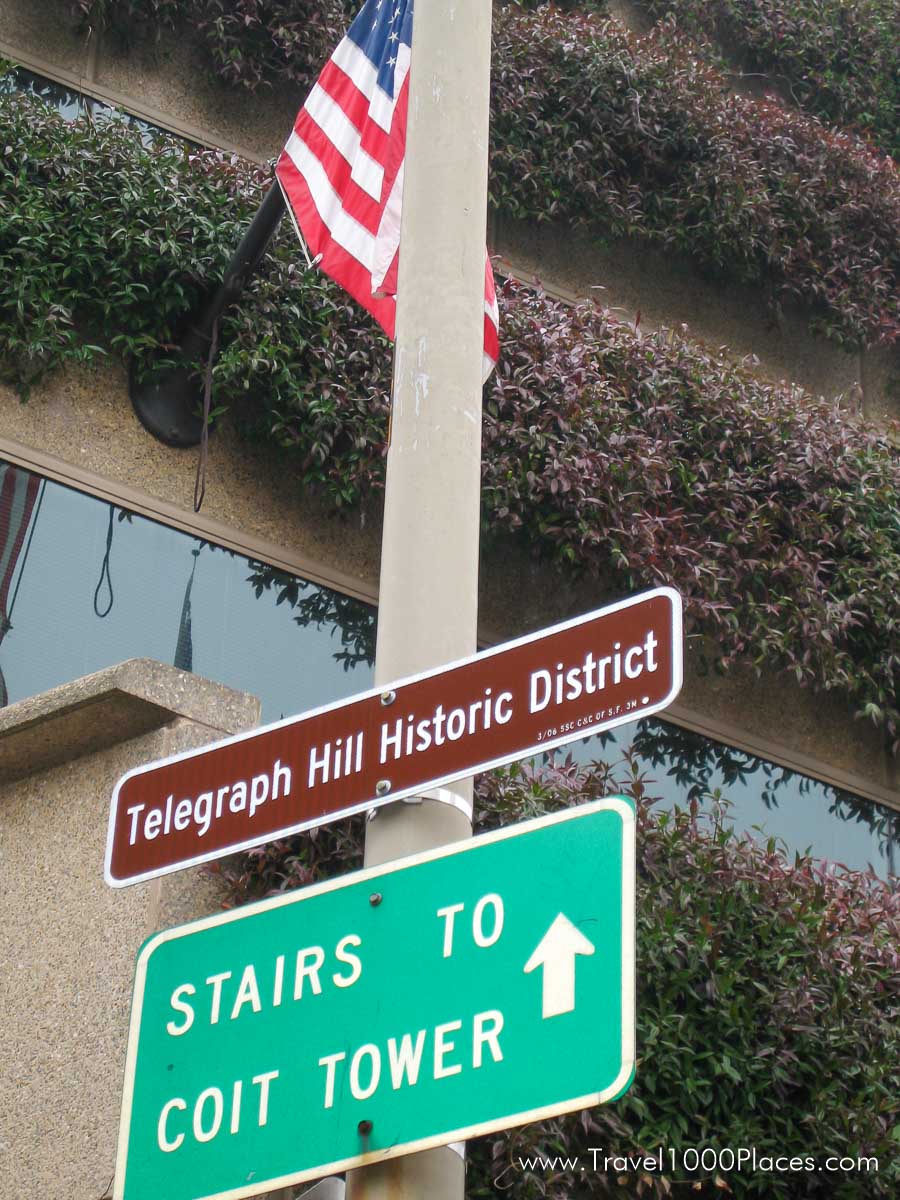The city is built on a series of hills – more than 40. The principal hills, which early earned it the Roman sobriquet of ‘City of Seven Hills‘, are Nob Hill, Russian Hill, Telegraph Hill, Twin Peaks Hill, Mount Davidson Hill, Rincon Hill and Lone Mountain Hill.
San Francisco Sightseeing & Attractions Overview
Learn about the top S.F. sightseeing and attractions in our article: San Francisco — sightseeing & attractions

According to the city archivist, San Francisco has 42 hills ranging upward from 200 to 938 feet. But for those whose favorite sport is scaring friends from the flatlands, only five really count.
The city is built on a series of hills – more than 40! Consequently, almost every other street points the way to a panoramic view of the Bay. The principal hills, which early earned it the Roman sobriquet of ‘City of Seven Hills‘, are Nob Hill, Russian Hill, Telegraph Hill, Twin Peaks Hill, Mount Davidson Hill, Rincon Hill and Lone Mountain Hill.
The city’s 10 steepest through streets (open to vehicles) are conveniently confined to Russian and Nob Hills and Pacific, Dolores and Buena Vista Heights.
Most of these eccentric arteries are marked at the point where they vanish into space with yellow “Hill” or “Grade” signs. What this means is “Don’t try it unless you’ve had your brakes checked recently.”
Here, according to the city Bureau of Engineering, are the steepest of the steep in descending order:
- 1. & 2.
Filbert between Leavenworth and Hyde;
22nd Street between Church and Vicksburg, both 31.5 percent gradient. - 3. Jones between Union and Filbert, 29 percent.
- 4. Duboce between Buena Vista and Alpine, 27.9 percent.
- 5. & 6.
Jones between Green and Union;
Webster between Vallejo and Broadway, both 26 percent. - 7. & 8.
Duboce between Divisadero and Alpine;
Duboce between Castro and Divisadero, both 25 percent. - 9. Jones between Pine and California, 24.8 percent.
- 10. Fillmore between Vallejo and Broadway, 24 percent.

Lombard Street
May be San Francisco’s most photographed street.
Russian Hill has country-like lanes and terraces and panoramic bay views. Lombard Street descends the hill from Hyde—with nine hairpin turns in a single block.
The ‘crooky’ portion starts at Hyde Street and you can look downhill or, what is much better, go to the end at Leavenworth Street and see it from the opposite hill.
The Cable Car stops at Hyde Street / Lombard Street. Enjoy the view over the bay or Ghirardelli Square and Alcatraz.
Web: Lombard Street (San Francisco) – Wikipedia
Coit Tower – a symbol of San Francisco’s
Coit Tower caps Telegraph Hill at the top of Filbert Street.


Wealthy socialite Lillie Hitchcock Coit so admired firemen at the 1906 earthquake fire that she bequeathed one third of her fortune in 1929 for the beautification of San Francisco.

In 1934 Coit Tower (designed as a classic colonnade and never intended to actually represent a fire nozzle) was built as a memorial to her. In 1932 a bronze statue of firemen holding hoses and rescuing a damsel in distress was erected in Washington Square Park, as her tribute to the city’s brave fire fighters.
Coit Tower caps Telegraph Hill at the top of Filbert Street. Washington Square Park sits in the heart of North Beach and is bound by Columbus, Filbert and Stockton streets.
View Coit Tower in 3D (Bing Maps)
Bing 3D Map: View Coit Tower in 3D
Hours
To reach the top of 210-foot Coit Tower, there is an elevator, open daily 10 a.m to 7 p.m
Web: Parks and Facilities • San Francisco Recreation and Parks, CA (sfrecpark.org)
Coit Tower
1 Telegraph Hill Blvd in Pioneer Park
Bus: #39 MUNI Bus drives to the Coit Tower from Washington Square.
San Francisco Sightseeing & Attractions Overview
Learn about the top S.F. sightseeing and attractions in our article: San Francisco — sightseeing & attractions

